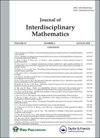利用机器学习算法改进智能医疗系统中多体传感器分析的QoS
IF 0.8
Q1 MATHEMATICS
引用次数: 0
摘要
采用有意义的学习方法对人体引线进行识别适用于从人体传感器获得的粗糙信息包中提取判别式。但人类的进展是理想的编码在一个运动适度的模型,标准的人工智能策略是完成认证义务,而不利用分析信息测试之间的正常关系。本文提出利用(DRNN)构造一个具有因子长度输入位置的临界距离条件的心理模型。我们提出了关于具有LSTM的drnn的单向、双向和舒适模型,并使用零星基准数据集查找参数。探索性结果表明,该模型优于标准的基于人工智能的系统。SVM和最近邻方法(KNN)。此外,在本文中,实现智能系统的运行倾向于其他重要的学习技术,如深度信任组织(DBN)和CNN。人类行为识别(HAR)任务一致地使用启发式循环得到的排列亮点。本文章由计算机程序翻译,如有差异,请以英文原文为准。
Improve QoS for multi-body sensor analytics in smart healthcare system using machine learning algorithm
Embracing significant learning methods for human lead affirmation has shown suitable in taking out discriminants from the coarse information packs obtained from body-mounted sensors. But human headway is ideal coded in a movement of moderate models, the standard AI strategy is to finished certification obligations without taking advantage of the normal relationship between analysis information tests. This paper proposes the use of (DRNN) to manufacture a psychological model that can get critical distance conditions with factor-length input position. We present unidirectional, bidirectional, and comfortable models concerning DRNNs with LSTM and finding parameters using sporadic benchmark datasets. Exploratory results show that the proposed model is superior to a standard AI-based system. SVM and Nearest Neighbour Method (KNN). Moreover, In this Paper implementation smart system runs in tendency to other significant learning techniques like Deep Trust Organization (DBN) and CNN. Human Action Acknowledgment (HAR) assignments were consistently made using arranged highlights got by heuristic cycles.
求助全文
通过发布文献求助,成功后即可免费获取论文全文。
去求助
来源期刊

JOURNAL OF INTERDISCIPLINARY MATHEMATICS
MATHEMATICS-
CiteScore
2.70
自引率
23.50%
发文量
141
期刊介绍:
The Journal of Interdisciplinary Mathematics (JIM) is a world leading journal publishing high quality, rigorously peer-reviewed original research in mathematical applications to different disciplines, and to the methodological and theoretical role of mathematics in underpinning all scientific disciplines. The scope is intentionally broad, but papers must make a novel contribution to the fields covered in order to be considered for publication. Topics include, but are not limited, to the following: • Interface of Mathematics with other Disciplines • Theoretical Role of Mathematics • Methodological Role of Mathematics • Interface of Statistics with other Disciplines • Cognitive Sciences • Applications of Mathematics • Industrial Mathematics • Dynamical Systems • Mathematical Biology • Fuzzy Mathematics The journal considers original research articles, survey articles, and book reviews for publication. Responses to articles and correspondence will also be considered at the Editor-in-Chief’s discretion. Special issue proposals in cutting-edge and timely areas of research in interdisciplinary mathematical research are encouraged – please contact the Editor-in-Chief in the first instance.
 求助内容:
求助内容: 应助结果提醒方式:
应助结果提醒方式:


